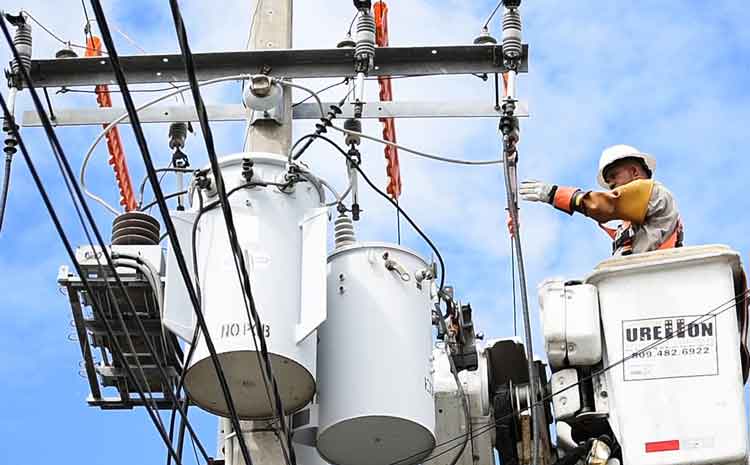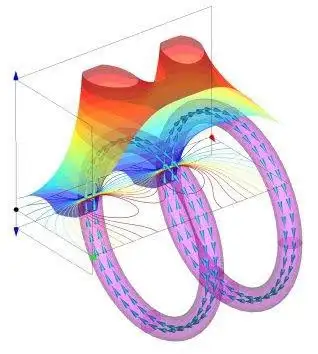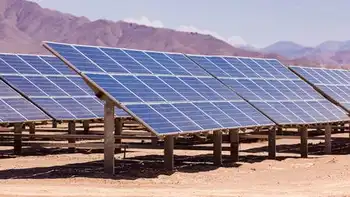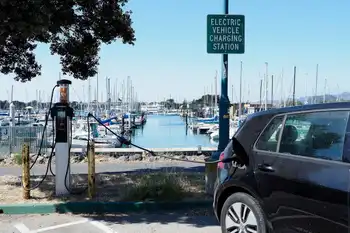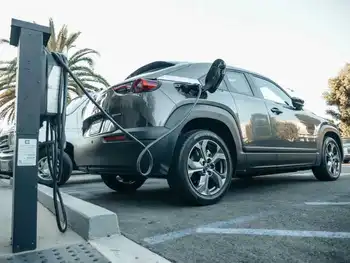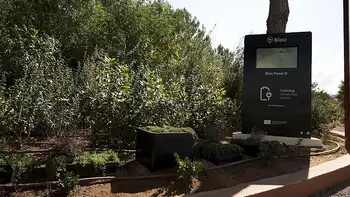Electric car charging networks jostle for pole position amid Biden's push to electrify
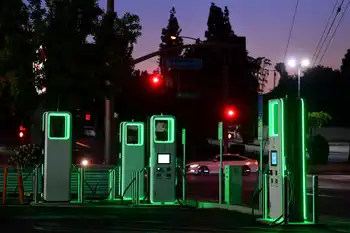
Electrical Testing & Commissioning of Power Systems
Our customized live online or in‑person group training can be delivered to your staff at your location.

- Live Online
- 12 hours Instructor-led
- Group Training Available
EV Charging Infrastructure Expansion accelerates as DC fast charging, Level 2 stations, and 150-350 kW networks grow nationwide, driven by Biden's plan, ChargePoint, EVgo, and Electrify America partnerships at retailers like Walmart and 7-Eleven.
Key Points
The nationwide build-out of public EV chargers, focusing on DC fast charging, kW capacity, and retailer partnerships.
✅ DC fast chargers at 150-350 kW cut charge times
✅ Retailers add ports: Walmart and 7-Eleven expand access
✅ Investments surge via ChargePoint, EVgo, Electrify America
Today’s battery-electric vehicles deliver longer range at a lower cost, are faster and more feature-laden than earlier models. But there’s one particular challenge that still must be addressed: charging infrastructure across the U.S.
That’s a concern that President Joe Biden wants to address, with $174 billion of his proposed infrastructure bill to be used to promote the EV boom while expanding access. About 10 percent of that would help fund a nationwide network of 500,000 chargers.
However, even before a formal bill is delivered to Congress, the pace at which public charging stations are switching on is rapidly accelerating.
From Walmart to 7-Eleven, electric car owners can expect to find more and more charging stations available, as automakers strike deals with regulators, charger companies and other businesses, even as control of charging remains contested.
7-Eleven convenience chain already operates 22 charging stations and plans to grow that to 500 by the end of 2022. Walmart now lets customers charge up at 365 stores around the country and plans to more than double that over the next several years.
According to the Department of Energy, there were 20,178 public chargers available at the end of 2017. That surged to 41,400 during the first quarter of this year, as electric utilities pursue aggressive charging plans.
The vast majority of those available three years ago were “Level 2,” 240-volt AC chargers that would take as much as 12 hours to fully recharge today’s long-range BEVs, like the Tesla Model 3 or Ford Mustang Mach-E. Increasingly, new chargers are operating at 400 volts and even 800 volts, delivering anywhere from 50 to 350 kilowatts. The new Kia EV6 will be able to reach 80 percent of its full capacity in just 18 minutes.
“Going forward, unless there is a limit to the power we can access at a particular location, all our new chargers will have 150 to 350 kilowatt capacity,” Pat Romano, CEO of ChargePoint, one of the world’s largest providers of chargers, told NBC News.
ChargePoint saw its first-quarter revenues jump by 24 percent to $40.5 million this year, a surge largely driven by rapid growth in the EV market. Sales of battery cars were up 45 percent during the first quarter, compared to a year earlier. To take advantage of that growth, ChargePoint added another 6,000 active ports — the electric equivalent of a gas pump — during the quarter. It now has 112,000 active charge ports.
In March, ChargePoint became the world’s first publicly traded global EV charging network. It completed a SPAC-style merger with Switchback Energy Acquisition Corporation. Rival EVgo plans to go through a similar deal this month with the "blank check" company Climate Change Crisis Real Impact Acquisition Corporation (CRIS), which has valued the charge provider at $2.6 billion.
“We look forward to highlighting EVgo’s leadership position and its significant opportunity for long-term growth in the climate critical electrification of transport sector,” CRIS CEO David Crane said Tuesday, ahead of an investor meeting with EVgo.
Electrify America, another emerging giant, has its own deep-pocket backer. The suburban Washington, D.C.-based firm was created using $2 billion of the settlement Volkswagen agreed to pay to settle its diesel emissions scandal. It is doling that out in regular tranches and just announced $200 million in additional investments — much of that to set up new chargers.
Industry investments in BEVs will top $250 million this decade, and could even reach $500 billion. That's encouraging automakers like Volkswagen, Ford and General Motors to tie up with individual charger companies, including plans to build 30,000 chargers nationwide.
In 2019, GM set up a partnership with Bechtel to build a charger network that will stretch across the U.S.
Others are establishing networks of their own, as Tesla has done with its Supercharger network.
Each charging network is leveraging relationships to speed up installations. Ford is offering buyers of its Mustang Mach-E 250 kilowatt-hours of free energy through Electrify America stations and is also partnering with Bank of America to “let you charge where you bank,” the automaker said.
Even if Biden gets his infrastructure plan through Congress quickly, other government agencies are already getting in to the charger business, even as state power grids brace for increased loads. That includes New York State which, in May, announced plans to put 150 new ports into place by year-end.
"Expanding high-speed charging in local markets across the state is a crucial step in encouraging more drivers to choose EVs,” said Gov. Andrew Cuomo, adding that, "public-private partnerships enable New York to build a network of fast, affordable and reliable electric vehicle public charging stations in a nimble and affordable way."
One of the big questions is how many charging stations actually are needed. There are 168,000 gas stations in the U.S., according to the Dept. of Energy. But the goal is not a one-for-one match, stressed ChargePoint CEO Romano, because “80 percent of EV owners today charge at home, and energy storage promises added flexibility, … and we expect that to continue to be the case."
But there are still many potential owners who won’t be able to set up their own chargers, and a network will still be needed for those driving long distances. Until that happens, many motorists will be reluctant to switch.






